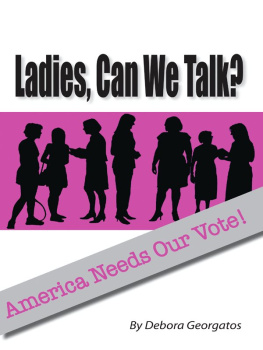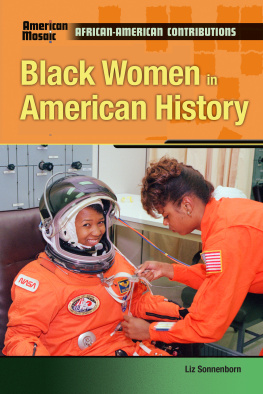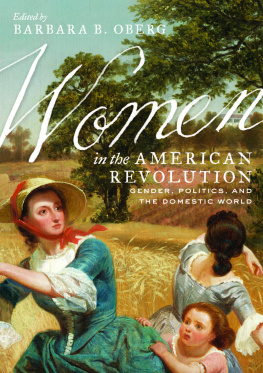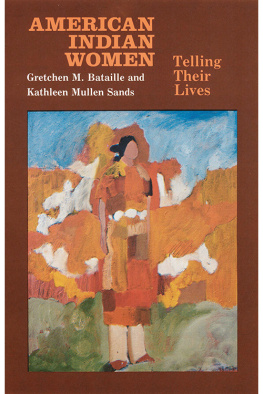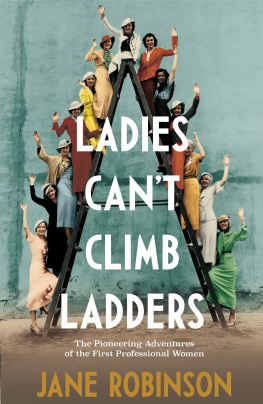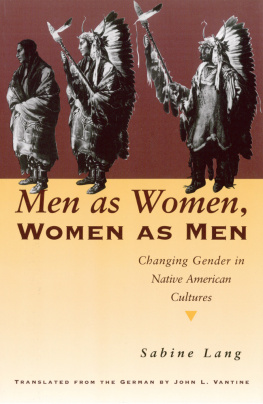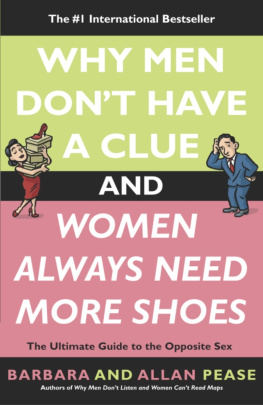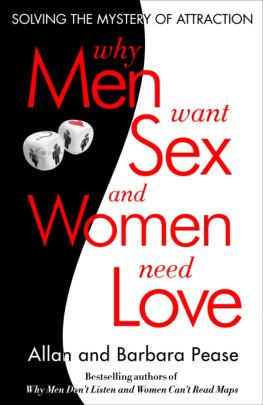Ladies,
Women, &
WenchesGender & American Culture
Coeditors
Linda K. Kerber
Nell Irvin Painter
Editorial Advisory Board
Nancy Cott
Cathy Davidson
Thadious Davis
Jane DeHart
Sara Evans
Mary Kelley
Annette Kolodny
Wendy Martin
Janice Radway
Barbara Sicherman
1990 The University
of North Carolina Press
All rights reserved
Library of Congress
Catalogmg-m-Publication Data
Pease, Jane H.
Ladies, women, and wenches : choice and constraint in antebellum Charleston and Boston / Jane H. Pease and William H. Pease
p. cm.(Gender & American culture)
Includes bibliographical references (p.).
ISBN 0-8078-1924-7 (alk paper).
ISBN 0-8078-4289-3 (pbk. : alk. paper)
1. WomenUnited StatesSocial conditionsCross-cultural studies 2. United StatesSocial conditions To 1865Case studies. 3. WomenMassachusetts BostonSocial conditions 4 WomenSouth Carolina CharlestonSocial conditions. I. Pease, William Henry, 1924-. II Title. III. Series.
HQ1419.P43 1990 89-21450
305.42'0973dc20 CIP
The paper in this book meets the guidelines for permanence and durability of the Committee on Production Guidelines for Book Longevity of the Council on Library Resources.
Manufactured in the United States of America
05 04 03 02 01 7 6 5 4 3
THIS BOOK WAS DIGITALLY MANUFACTURED.
In tribute to three women who,
long before and well after we
were born, made choices that
shaped their lives and ours.
Eva Coleman Saunders Annal Edgerly
1888-1993
Olive Coleman Hanna
1886-1977
Arlme Brooks Pease
1888-1973
Contents
Illustrations
Young ladies' party clothes in 1841
Caroline Howard Gilman
Lydia Maria Francis Child
Broadside announcing a sale of domestic servants in Charleston
The characteristic plight of a seamstress
Charleston market women
Boston's Franklin Grammar School for girls
The Barhamville Academy near Columbia, S.C.
Sarah Moore Grimk
Maria Weston Chapman
Boston's House of Industry and House of Correction after they opened in 1825
The benign image of the Charleston Orphan House
Frances Appleton Longfellow
Preface
This book embodies three strands of our professional lives: our continuing interest in nineteenth-century American social realities and aspirations; our more recent exploration of sources and methods that extract private experience from public records; and our long-standing curiosity about the imperatives that gender has imposed on both past and present.
In this context we have examined the lives of women living in Charleston and Boston between 1820 and 1850. While this was the gestation period of American feminism, it was more importantly a time when political life and economic activity were so reoriented that fundamental social changes followedand with them popular demands that they be halted or redirected or extended. Much of this activity was urban. Thus, when we turned our attention specifically to women, we not unnaturally chose two cities that we had already studied and written about in some detail and that exhibited the distinctive regional and racial characteristics in which we were especially interested.
This study, then, reflects historians' largely new dedication to exploring women's past, their somewhat more fleeting resurrection of urban history, and their widely proclaimed but less practiced application of a comparative approach. It is also informed, however, by our more distinctly personal belief that individual choice and personal preference create significant variations within social structures bounded by gender and class, race and region. And, finally, because we have always tried to understand the atypical as well as the typical, Ladies, Women, and Wenches is one more effort to plumb those two mostand leastAmerican of cities: Boston, the lodes tone of our youths; and Charleston, where we now live.
Our general research on Boston and Charleston was aided by grants from the American Philosophical Society, the National Endowment for the Humanities (RS-1454-80), the National Science Foundation (SES-8023796), and the University of Maine Faculty Research Fund. To complete our work on ladies, women, and wenches, we were additionally aided by a grant from the University of Maine's Women in the Curriculum program. Since our recent retirement from teaching, we have been given access to the resources of the University of South Carolina as fellows of the Institute for Southern Studies and to those of the College of Charleston as associates in history.
We are also indebted to the libraries, archives, and historical societies that for almost twenty years have provided us the books, journals, government documents, and manuscripts on which this study is based. These repositories are so numerous and their staffs have been so helpful that to thank them individually and appropriately here is impossible. Nonetheless, it is incumbent on us to acknowledge the interlibrary loan staffs of the Fogler Library of the University of Maine and the Robert Smalls Library of the College of Charleston for their invaluable assistance.
The following institutions have given us generous permission to quote from manuscripts in their collections: the Amelia Gayle Gorgas Library of the University of Alabama; the Arthur and Elizabeth Schlesinger Library of Radcliffe College; the Baker and Houghton libraries of Harvard University; the Trustees of the Boston Public Library; the Historical Society of Pennsylvania; the Library of Congress; the Longfellow National Historic Site of the National Park Service; the Massachusetts Historical Society; the New York Public Library; the South Carolina Historical Society; the South Caroliniana Library of the University of South Carolina; the William R. Perkins Library of Duke University; and the Southern Historical Collection of the University of North Carolina. And for permission to quote from copyrighted material we thank the University of Georgia Press and Little, Brown and Company. Our illustrations and permission to reproduce them here come from the Arthur and Elizabeth Schlesinger Library of Radcliffe College, the Longfellow National Historic Site of the National Park Service, the Massachusetts Historical Society, and the South Caroliniana Library.
Finally, to many friends, male and female, whose views about women's roles are either more traditional or more radical than ours, we owe a substantial debt. They have forced us to reassess our assumptions in ways that might otherwise have escaped us.
JHP
WHP
Charleston, S.C.
April 1989
1
Choice and Constraint
Traditionally the history of women has been the history of the daughters, sisters, wives, and mothers of men. Women's history, like woman's place, was in the home. The families and homes that shaped their lives were the creations of menmen who were the heads of households, the sources of income, the wielders of power, and thereby the determinants of the class, status, occupation, and life-style of their women. Within the last twenty years, however, historians have set a new course, exploring women's history as a female experience separate and distinct from that of males. Some have explored how and why society imposed new gender rules on women at particular times and places and how women responded to them; others have examined the special bonds that women created among themselves.


